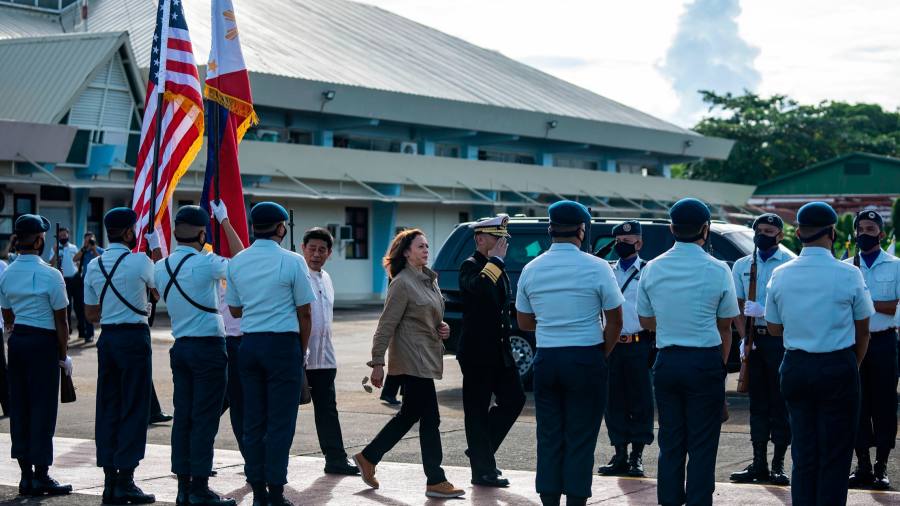
US vice-president Kamala Harris visited the Philippine island of Palawan on the edge of the disputed South China Sea on Tuesday, in a bold demonstration of how Washington and Manila are reinvigorating their security alliance as they guard against an increasingly assertive Beijing.
Prompted by the pro-US stance of new Philippine president Ferdinand Marcos Jr, armed forces from both sides are stepping up joint exercises and preparing for a steep increase in rotational deployments of US forces in the country.
The main drivers are the expectation that the Philippines will be a key staging ground in a potential Taiwan conflict and the desire to push back against Chinese aggression in the South China Sea, which Beijing claims almost in its entirety.
Harris, the most senior US official to visit Palawan, landed just as US defence secretary Lloyd Austin and his Chinese counterpart Wei Fenghe tried to cool tensions over Taiwan. Her trip follows days of confrontations between Philippine and Chinese forces in the adjacent disputed Spratly archipelago.
According to the Philippine military, a Chinese coast guard vessel on Sunday forcibly seized a floating object identified as debris from a Chinese rocket, which a Philippine naval ship was towing to Pag-asa, an island in the Spratlys also known as Thitu. The Chinese government denies it used force to retrieve the rocket debris.
On Monday, Harris reaffirmed that the bilateral security alliance between the US and Philippines includes the South China Sea.
“We stand with you in defence of international rules and norms as it relates to the South China Sea,” Harris told the Philippine president. “An armed attack on Philippine armed forces, vessels or aircraft in the South China Sea would invoke US mutual defence commitments.”
For Marcos, US support in the South China Sea is crucial as he takes a much firmer stance than his predecessor, Rodrigo Duterte, against Chinese encroachment in disputed waters. At the same time, Manila increasingly shares US concerns that a potential move by China to bring Taiwan under its control with military force could drag the region into war.
Reflecting those concerns, the Philippines and US are planning to double the number of joint military facilities, where the US can position weapons and train forces, to 10. The Philippines armed forces have identified five sites for these facilities, Lieutenant General Bartolome Vicente Bacarro, chief of staff, said last week. According to Bacarro, all are in the north of the country, including one on Palawan and two in Cagayan, the province nearest to Taiwan.
Austin emphasised “the need to responsibly manage competition and maintain open lines of communication” in his meeting with Wei, according to the Pentagon. Washington’s readout of the talks — the first since Beijing cut off such exchanges in retaliation against US House Speaker Nancy Pelosi’s visit to Taiwan in early August — appealed to China to refrain from further destabilising actions towards Taiwan.
China’s defence ministry said the main reason for the current state of bilateral relations was that the US had “made a wrong strategic judgment”.